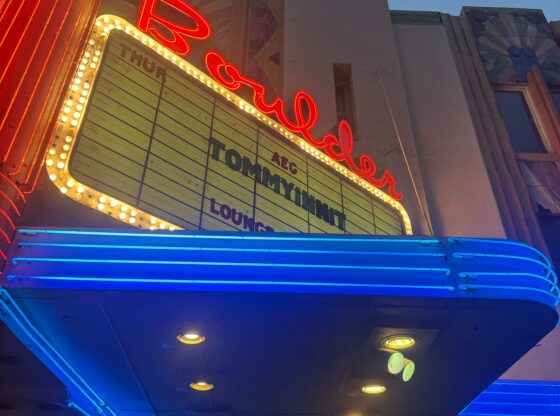The Transformative Power: Indigenous Feminism exhibit is the most recent installment at the Vicki Myhren Gallery here on campus. This exhibit focuses predominantly on the art and experiences of indigenous women living within the U.S. and Canada, along with their stories of struggle and resilience. This collection and presentation was orchestrated by Guest Curator Daina Warren (Instagram), who heavily emphasizes the stories of her own Canadian Cree Tribe as inspiration. Warren graduated from Emily Carr School of Art and Design in Vancouver, Canada in 2003. Afterwards, she gained experience curating exhibits at the Grunt Gallery in Vancouver before moving on to being the Curator and Director of Urban Shaman Contemporary Aborignal Art in Manitoba, Canada. Between her experiences, Warren has 20 years of aboriginal curating experience, which is on full display at the Myhren Gallery.
The exhibit does a thorough job at giving First Nation and aboriginal women a voice, from Inuktitut speakers in Canada’s Far North to individuals who identify as Two-Spirited living in American Samoa. Moreover, the entire scope of this project is encapsulated within the limited space of the Myhren Gallery, making it an impressive feat. The exhibit uses a mixture of mediums, making every piece a completely unique experience and a real insight into the thoughts and feelings of the artist. While walking around, every piece has an accompanying description of the work and its artist on a printed Gallery Guide. Below are written examples of just some of the pieces on display:
“14 K Cowgirl” by Sarah Sense (Instagram, Website)
The first piece that one is greeted with when entering into the exhibit is a picture that is composed of interwoven inkjet prints. Sarah Sense, the artist, uses her own Choctaw and Chitimacha ancestry as inspiration for her work. When standing back from one of her pieces, the traditional interwoven nature of her art creates the illusion that the viewer is looking at a blanket or cloth of some kind. When getting closer, figures and details reveal themselves until the story of the piece is truly revealed. Sense’s pieces feature a struggle against the romanticized and stereotypical depiction of the “Indian princess,” and are an excellent opener to the rest of the exhibit.
“Taualuga: The Last Dance” by Yuki Kihara (Instagram, Website)
This entry by Yuki Kihara is one of the many video pieces on display. The viewer is beckoned to put on a pair of headphones in front of the screen. The video is of Kihara, who is of Samoan descent, dancing to a Samoan song while adorning a traditionally Victorian style dress. The piece symbolizes an act of rebellion as Victorian dresses are typically quite hard to move in and hail from the colonizers of Samoa. Despite this, Kihara has found a way to slowly and eloquently dance to her own culture’s music. The dress symbolizes the bondage that colonialism had placed on her own society, while her dancing symbolizes the breaking of those bonds and finding her freedom despite these limitations.
“OIL & GOLD” by Cara Romero (Instagram, Website)
“OIL & GOLD” depicts two women standing in front of an oil refinery in Southern California. They are both adorned in traditional clothing with a twist: one of their outfits has been dipped in oil, and the other in gold. They stare at the camera while holding hands, which have been also dipped in their respective color. This striking photograph represents the ongoing destruction of the land and the native tribes that belong to California. Many of these tribes are not federally recognized, allowing them to be easily exploited. This piece, along with Romero’s other work, is visually assertive and packs a heavy message for its viewers. Her work should not be overlooked when visiting the exhibit.
Transformative Power: Indigenous Feminism is open from Sept. 15 through Nov. 27 from 12-5 p.m. everyday, except for Mondays. The Vicki Myhren Gallery is located within the Shwayder Art Building.
For more information, please refer to the exhibit’s website which can be found here. Special thanks to Geoffrey Shamos, Ph.D, Director of the Vicki Myhren Exhibit and Curator of the University Art Collection, in supporting the writing of this article.











